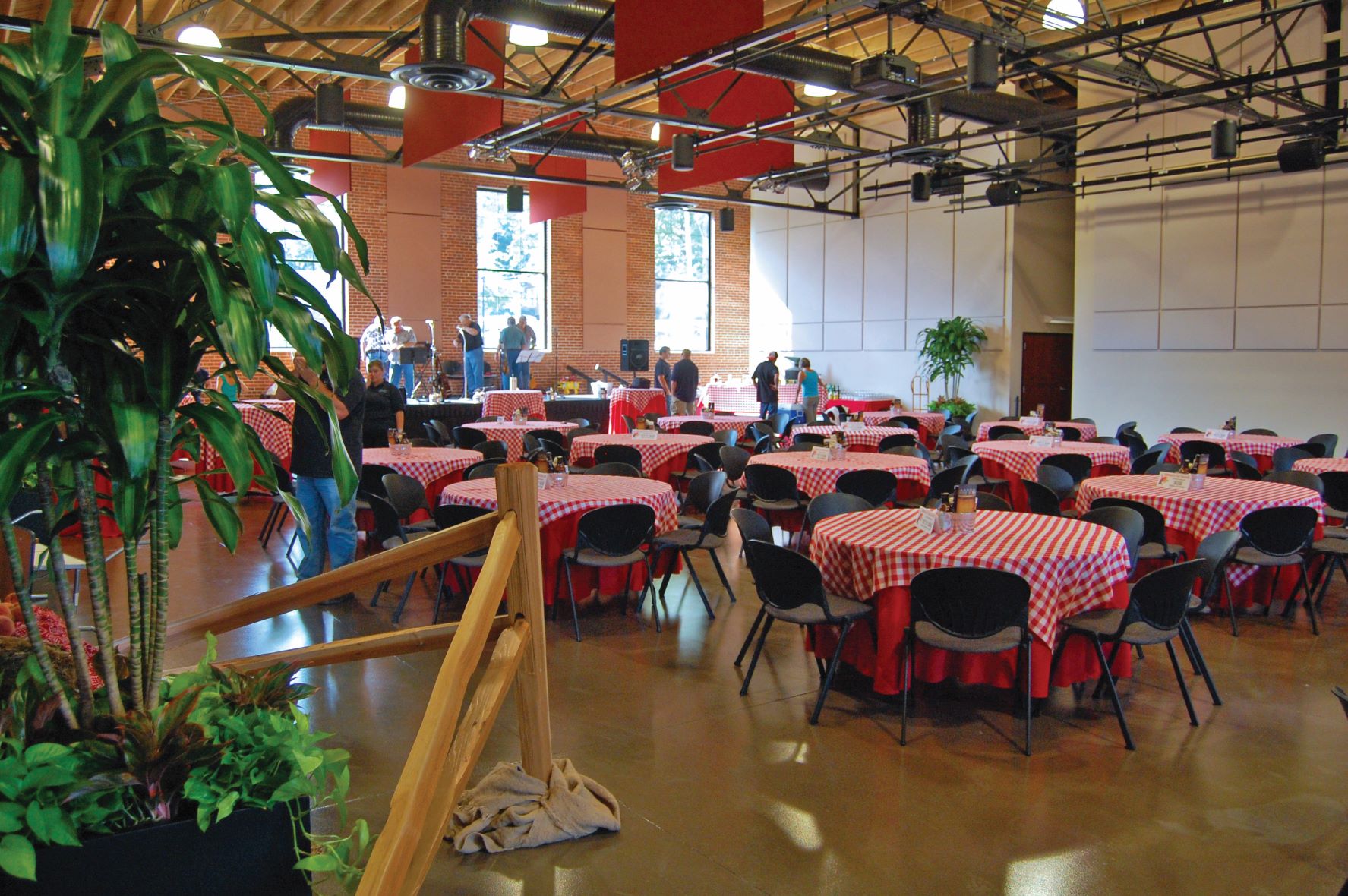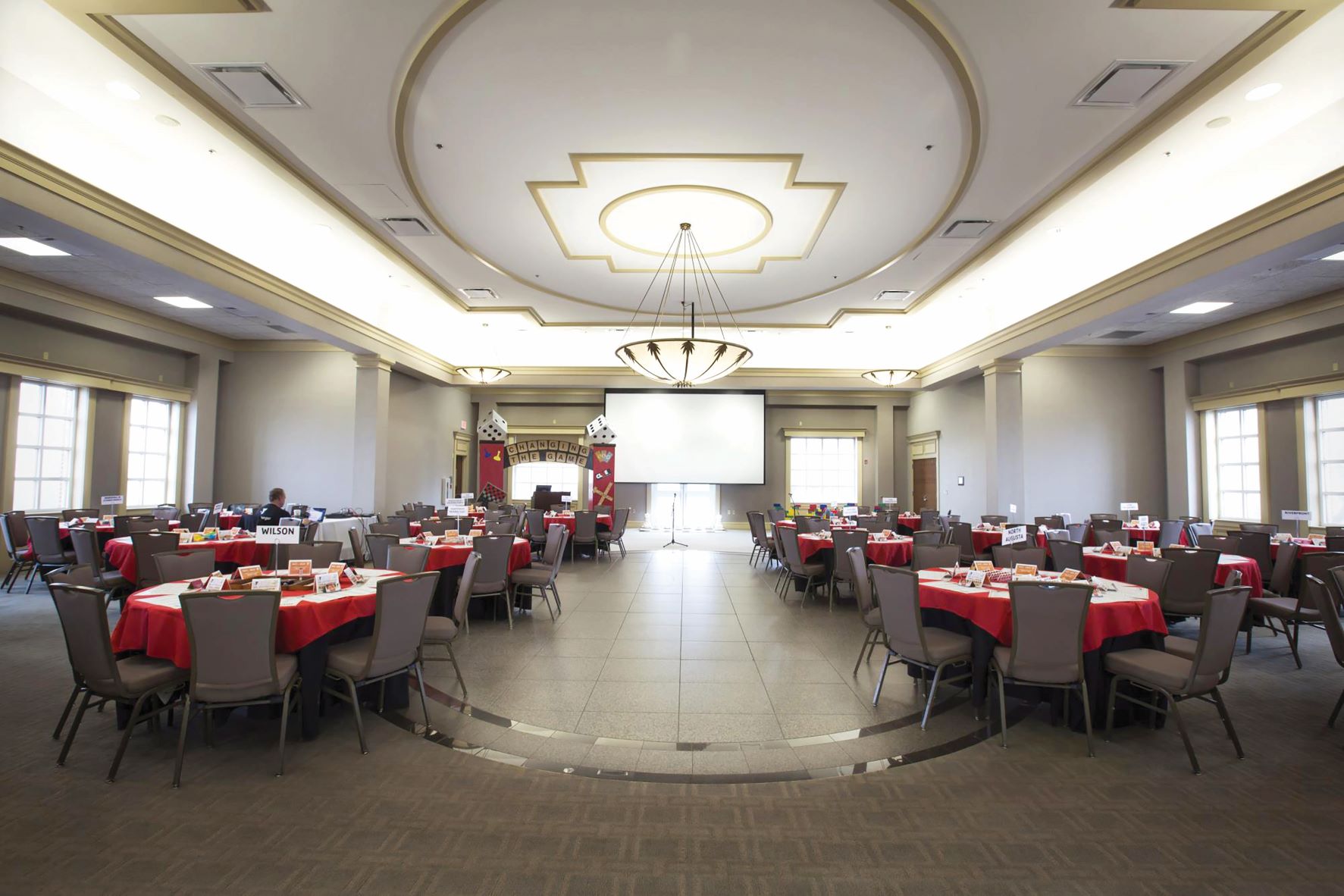Multifunctional building facilities have become a common feature for municipal governments, whether it is a city hall that combines various departments or a venue that can be rented for special events. Developing buildings this way can improve facilities and create revenue streams, but it can have more benefits still. Offering spaces in city facilities for weddings, family reunions or other celebrations doesn’t just make financial sense for a city — it can build community pride, too.
Consider the City of Greer, where residents have the opportunity to rent everything from a small city hall conference room, large event spaces for parties or a popular park amphitheater.
“Inviting the community into city facilities — and being able to offer discounted rental fees to city residents — helps them better understand the value of living in a municipality and generates civic pride when holding an event,” said Steve Owens, Greer’s communications manager.
When city officials were making plans for the new Greer City Hall and City Park, they realized the need for event space in the Greer Station downtown area. When the city hall building opened in 2008, it included conference rooms for small meetings and a 4,500-square-foot events hall. The large hall can be subdivided and into smaller spaces, too. The city park includes an amphitheater and gazebo — a popular spot for an outdoor wedding. It also has a picnic shelter that is a favorite for birthday parties, Owens said.

Greer’s Cannon Centre features a 4,500-square-foot events hall. Photo: City of Greer.
Meanwhile, a building that was originally constructed in 1937 as the National Guard Armory and used in later decades by the Greer Parks and Recreation Department as a gym, was reborn in 2012 as the Cannon Centre. It features about 5,600 square feet of space with a deck that overlooks the gazebo and pond. With its exposed brick walls, high ceilings, full kitchen and seating for up to 350 people, it is a popular spot for weddings and other large events.
“City officials realized that municipal events space is crucial to quality of life and incorporated that into their vision for growth. This includes making available space for weddings, anniversaries, birthdays, class and family reunions, quinceañeras, proms and community or corporate meetings. Those are just a few of the events the city has hosted since City Hall opened in 2008,” Owens said. “With state-of-the-art audio/visual equipment in each meeting space and available catering kitchens, organizers have the ability to make their events as specialized as desired.”
North Augusta is another city that considered adding rental space when it was building its municipal center, deciding to turn the top floor of the four-story building into an event venue. The Palmetto Terrace opened in 2009 and features a large ballroom, kitchen, atrium area and an outside area with a view of North Augusta, including its new baseball stadium.

The Palmetto Terrace is located in the upper portion of North Augusta’s Municipal Center.
Photo: City of North Augusta.
“North Augusta built its city hall for the future. We’re thankful, because now we’re 12 years into it. It may cost more upfront, but you’ll be thankful and you’ll grow into the space,” said Karl Waldhauer, superintendent of facilities and programs for North Augusta’s Park, Recreation and Tourism Department, which oversees the event rental spaces.
He said the addition of a Crowne Plaza Hotel within walking distance of the city hall building has helped make the Palmetto Terrace a popular spot for Friday rehearsal dinners and Saturday weddings, with indoor and outdoor space available for both.
“We get to provide an affordable venue for our residents to use a city facility that’s centrally located,” he said. “Our elected officials had some forward thinking. City hall was the first major structure in that district. Our downtown is getting revitalized and is in walking distance. You can park your car on Friday, stay at the hotel and go back to a rehearsal dinner and wedding and not have to get in your car. There are plenty of restaurants to grab something to eat in walking distance. It’s between downtown and our Riverside Village district. It’s become the new place to be in the [Central Savannah River Area,] which includes Aiken County and Augusta.”
And while the majority of the bookings are wedding related, others also rent the space.
“We also have high school proms. And Augusta University’s dental school students just had their formal here. That’s pretty cool. It exposes younger folks to a good city facility,” Waldhauer said.
The city also has the North Augusta Community Center built in the early 1980s, a standalone rental space offering a more traditional, formal venue.
Both Greer and North Augusta point out the importance of providing adequate staffing for event spaces.
“You can have a great facility, but you want to have a dedicated staff to do it right. You don’t want your planning department people to have to stop what they’re doing and show customers the rental space at 2 p.m.,” Waldhauer said. “With event spaces, you have a lot of window shoppers. They’re pricing it out. Most people want to see it and visit it, and that takes time. You can’t assign that task to just any department.”
North Augusta has two full-time staff members to handle the space rentals in city hall and the community center, and uses its housekeeping crew to supplement set up and cleaning.
Greer’s Owens reiterated that point: “Having dedicated staff to show event spaces and to assist during an event is paramount. They are the city’s ambassadors and are invaluable when some portion of an event doesn’t go as planned, and that seems to be the norm. Customer service is a huge part of ensuring that quality experience.”
Owens said rental fees are reinvested to pay for staff and facility maintenance to ensure a quality experience for guests and to offset the cost of additional resources.
“The demand for high-quality audio/visual capabilities is now a common thread and requires keeping up with advances in technology. There is now an expectation that Blu-Ray and streaming capabilities and upgraded speakers will be available,” he said. “Committing resources to technology and its maintenance is just as important as ensuring furniture and carpets are spotless.”
The Town of Chapin offers an example of a municipality combining a police station, courthouse, town hall and meeting area in one 15,000-square-foot multifunctional facility.
“As a small town … Chapin officials determined they could govern most efficiently with all town services housed in one facility. Chapin is able to best serve its community from a single location. Furthermore, it was not feasible for the town to construct separate administrative facilities for its utility and police departments,” said Nicholle Burroughs, director of public affairs for Chapin.
Burroughs said the town council decided to build its town hall with money from its utility funds and the town’s general fund. Water and sewer utility and administrative offices were planned for one wing of the building and the police department and court offices were to be housed in a separate wing. These two divisions would be separated by a reception area and community meeting room.
“As the Municipal Building was being planned in the early 2000s, council believed that its growing utility department, serving a large portion of the northern end of Lexington County, would in short order occupy about half of the building, with police and court facilities taking up most of the rest. It was thought that the new facility would be large enough to accommodate anticipated growth,” she said. “As it turned out, the Chapin area continues to experience substantial growth. The utility department, which had relied on contracted services, grew exponentially, with the town taking over the engineering and administrative functions as well as operation and maintenance. The police department also expanded, and additional administrative personnel were added for general operations. The building, a decade after its opening, is already filled to capacity.”
Burroughs said the best advice she has for municipalities who are thinking about a multifunctional building is to carefully plan and anticipate needs for the next 10 to 20 years.
“Plan a facility which can be increased to at least double its size, surrounded by adequate parking areas, and ideally a site large enough on which a separate building or two could be constructed as needed,” she said.
